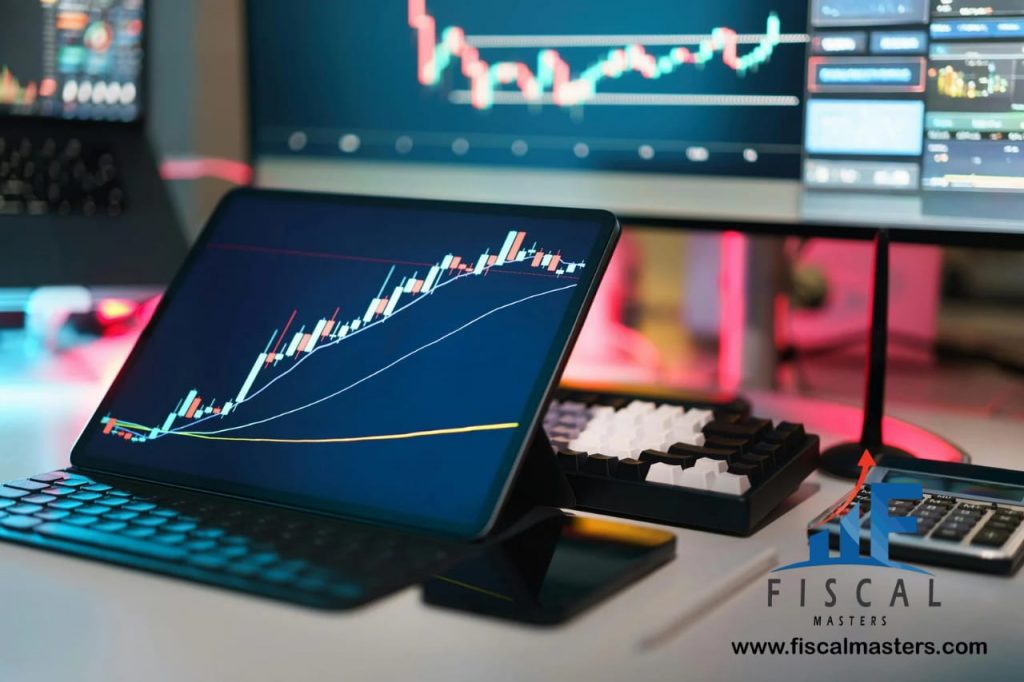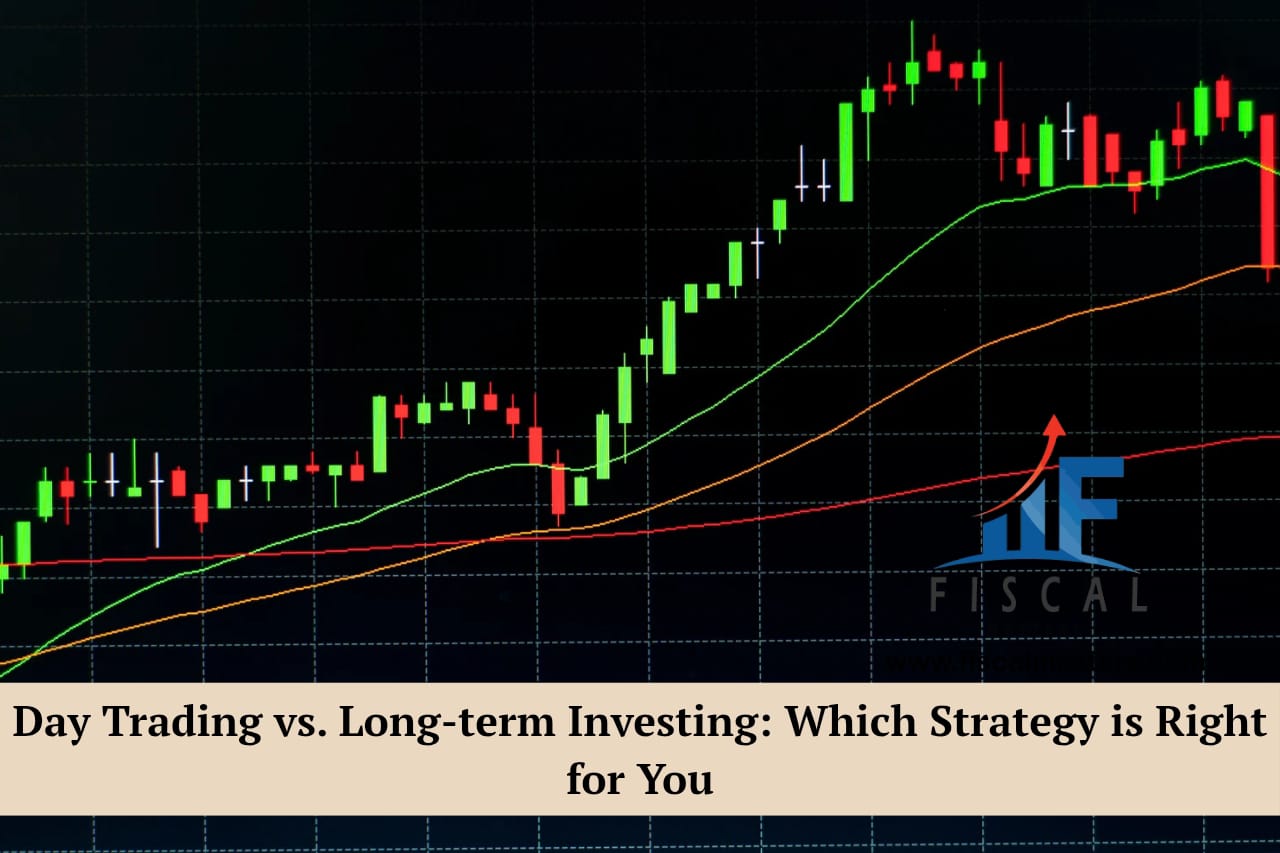What is the difference between day trading vs. long-term investing? Hasan, a 29-year old freelance graphic designer from Karachi doesn’t drink his morning chai until he checks his trading dashboard. Before most people have even opened their inbox, Hasan’s already deep in his charts. To the outsider, it looks like chaos but to him, it’s a calculated battlefield.
By 10 a.m, he might’ve closed three trades. Maybe he made a profit. Maybe not. It all depends on how the market moved that hour.
Read more: The Hidden Dangers of Cryptocurrency Leverage Trading – March 2025
Zara, a 35-year-old schoolteacher in Lahore is taking her students through a poetry lesson. She has no idea how the S&P 500 opened that day. But she knows that on the 1st of every month, a portion of her salary goes into a mix of ETFs, mutual funds, and dividend stocks. She doesn’t obsess over charts.
She plays the long game. Retirement is her focus, not tomorrow’s earnings report. They’re both in the same market yet living completely different financial lives. Now think, day trading vs. long-term investing which one fits your journey?

Day Trading vs. Long-Term Investing
This isn’t a popularity contest. It’s personal. Day trading vs. long-term investing is a decision shaped by your lifestyle, mindset, and goals. Watching only a viral TikTok trader doesn’t make day trading right for you. Let’s call it what it is, day trading is like a full-time job.
You need multiple monitors. Fast reflexes. Emotional control. The news breaks? You act. The chart moves? You act. One pause can turn a winning trade into a loss. It’s thrilling but exhausting. Long-term investing is calmer. You aren’t riding daily waves. You’re watching the tide. You invest regularly, stay patient, and let time not timing do the heavy lifting.
Day trading could feel like torture If your schedule is packed or volatility stresses you out. But if you’re willing to learn the ropes, it might just fit. Think deeply before choosing. Your strategy must match your rhythm not someone else’s highlight reel.
Read more: Stock Diversification: Why Diversification Matters in Stock Market Investing – February 2025
Short-Term vs. Long-Term Stock Trading: What’s the Real Difference?
Let’s dig into what separates these two worlds.
In short-term stock trading, you don’t care much about what the company does, you care about what its stock might do in the next hour or day. That’s why Hasan watches candlestick charts and economic news all morning.
He’s looking for quick movement, quick profits. Indicators like RSI (Relative Strength Index), volume spikes, and moving averages tell him when to buy or sell. The focus is the momentum. Long-term stock trading, though, is built on a different mindset. Zara wants to understand a company’s financial health.
Does it grow its revenue every year? Does it have a strong leadership team? Is it likely to be around in 15 years? Her decisions don’t change with market noise. She ignores the ups and downs because she’s playing the long game. Traders react and investors wait. Both are valid. You just need to decide how fast you want your money to move and how comfortable you are when it doesn’t.
Read more: Navigating the World of Decentralized Finance (De-Fi): Opportunities and Risks- July 2025
Best Trading Strategies for Beginners
Everyone starts somewhere. When Hasan first began, he watched a few YouTube videos, downloaded a trading app, and jumped in. Within a week, he lost 50% of his savings. Why? No plan and structure. Just good vibes. Beginners often fall for flashy setups like scalping or FOMO based trades in day trading.
But real strategies like momentum trading or breakouts require strict rules. You don’t just click buttons. You prepare, study, and test your skills on demo accounts first. Meanwhile, Zara’s strategy is simple but powerful: dollar-cost averaging. Every month, she buys the same amount of her favorite long-term assets, regardless of price. No stress and any kind of guessing.
Read more: Mastering Bitcoin Trading: Ten Definitive Tips for Beginners and Seasoned Traders – March 2024
This method works because it removes emotion from investing. Markets dip? She buys more shares. Markets rise? Her holdings increase in value. If you’re just starting, focus less on “quick wins” and more on learning. The best trading strategies for beginners don’t promise riches. They teach you consistency, patience, and risk control.
Pros and Cons of Day Trading
Let’s be honest. Day trading is exciting. There’s a rush when your trade goes green. You feel in control, powerful, and ahead of the game. You can earn money quickly. You set your own hours.
You’re not tied to long-term commitments. But there’s a darker side. You must sit in front of a screen for hours. Your stress levels will be through the roof and your emotions will be on a rollercoaster. Hasan says some days feel like he’s fighting gravity. When you lose, it’s fast and painful.
A single mistake can wipe out a week’s work. According to a Business Insider report, only 13% of day traders are profitable in the long run. That’s not meant to scare you. It’s just the truth. The pros and cons of day trading must be weighed carefully. If you’re not prepared to manage the pressure, don’t get pulled in by the profits.

How to Build a Long-Term Investment Portfolio
Zara isn’t a financial expert. She’s just smart with her money. Her strategy is she treats investing like a routine not a reaction. She started with small monthly contributions to index funds like the Vanguard S&P 500 ETF. Then she added dividend stocks companies that reward her for simply holding.
A few growth stocks round out the picture. She checks her performance, rebalances, and updates her goals once a year. It takes less than an hour. Building a long term investment portfolio doesn’t require magic. Start with your goal. Think is it retirement, or a college fund, or a future home?
Then try to diversify. Don’t put all your savings into one sector. Balance growth stocks with stability. Maybe throw in some bonds, or a REIT if you like real estate. Zara isn’t chasing the market. She’s building for the life she wants. So can you.
Read more: Top 10 Profitable Side Hustles in 2025: Boost Your Income Today- July 2025
Stock Market Trends for Traders vs Investors
Traders live in the now. Investors live in the future. Stock market trends show up differently to each. A price breakout today might signal a trade for Hasan. But Zara might look at that same stock and think, “What’s its five-year plan?”
When the pandemic hit, Hasan watched his trades nosedive. Fear took over. He sold everything. Zara? She kept buying. Even when it hurts. By 2021, her portfolio had grown significantly while Hasan was still recovering. Traders win when they act fast and manage risk. Investors win when they stay calm and patient.
The lesson is that both strategies work if you stick with them. However, long term investing has shown better returns because it’s built on patience.
Risk Management in Trading and Investing
This is where most people go wrong. Hasan learned the hard way. He once went “all-in” on a hot stock tip and lost 30% in one trade. That day changed his mindset forever. Now, he uses the 2% rule. No more than 2% of his total capital goes into any single trade.
He sets stop-loss orders. He avoids revenge trading. Zara protects her portfolio differently. She keeps a mix of sectors. Tech, healthcare, consumer goods all balanced. If one falls, others support her. She also keeps an emergency fund, so she never has to sell investments during a crisis. Risk management in trading and investing isn’t exciting but it’s essential. Before you chase gains, ask yourself: how much can I afford to lose?
Best Stocks for Day Trading and Long-Term Holding
Some stocks are versatile. Apple (AAPL) has high liquidity that is ideal for day trades. But it also pays dividends and grows steadily. Tesla (TSLA) is a rollercoaster. It is perfect for traders. Yet long-term holders believe it’s changing the auto industry. Microsoft (MSFT) is stable, diversified, and constantly innovating.
The secret is knowing how you want to use the stock. If you want to trade, look for volatility and news catalysts. If you want to invest, look for strong fundamentals and future growth. The best stocks for day trading and long-term holding aren’t rare but they need to be handled wisely. Know when to play fast and when to sit tight.
What Did Hasan and Zara Choose?
Hasan didn’t quit trading but he changed his pace. Now, he trades only a few times a week. The rest of his energy goes into growing his long-term investments. That 30% he puts away each month? It’s his backup plan and his peace of mind. Zara continues with her monthly SIP.
She’s added a small allocation to emerging markets, but her core remains strong and consistent. Together, they’ve found balance in day trading vs long-term investing. You don’t have to choose one path. You just have to walk whichever you pick with discipline.

Conclusion
The argument in day trading vs. long-term investing is about which is better for you. Day trading could play to your talents if you appreciate real time analysis and are able to manage emotional fluctuations.
Long term investing is more appropriate for you if you value stability and low maintenance wealth accumulation. You don’t have to pick just one. Many prosperous investors combine the two strategies. They take advantage of chances right away and gradually increase their wealth. Always be sure your plan fits your goals and way of life. Keep yourself informed and control your risk. Don’t allow temporary disruptions to cloud your long term goals.

